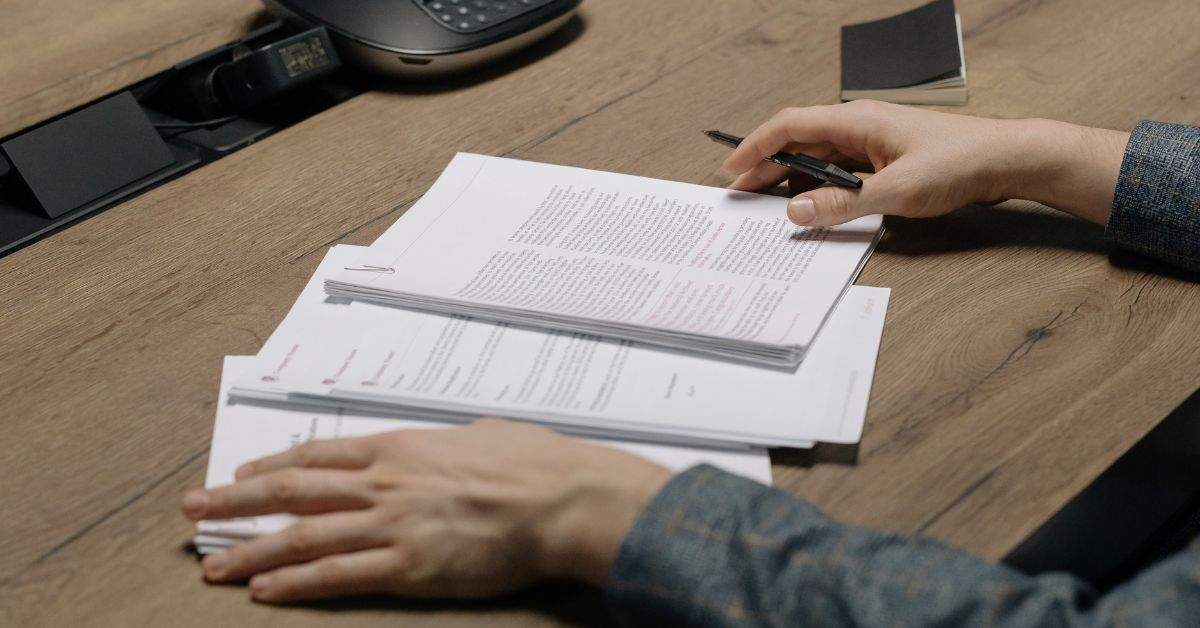So, you landed your first legal job? Congratulations! If it hasn’t happened already, you should know what’s coming next; a legal memorandum.
Invariably, some high-powered lawyer in your firm will call you into their office and speak words that strike fear into the hearts of many fledgling legal professionals:
“Can you draft me a memo on [insert arcane legal theory here]?”
The request, while anxiety-producing for many, is a fair one. The legal memorandum is how you earn your chops as a young legal professional. Indeed, few skills are as pivotal as the ability to draft a clear, concise, and persuasive legal memo.
The truth is, a legal memo will always be a critical tool within your practice, both as writer – and years from now – as the seasoned attorney requesting a thorough analysis on one topic or another. At any stage, it’s an important document that provides analysis and advice on key legal issues impacting your clients.
Whether you’re communicating with a senior partner, advising a client, or presenting an argument to a judge, the legal memo is your bridge between legal research and practical application.
Understanding its structure, purpose, and audience is essential for any lawyer aiming to make a significant impact in their job.
Not surprisingly, that is the topic of today’s post.
Understanding the purpose and audience
The cornerstone of any effective professional writing is a deep understanding of both the memo’s purpose and its intended audience. A legal memorandum primarily aims to inform and persuade.
It’s a detailed document that analyzes a particular legal issue or question, outlines the relevant law, applies the law to the facts at hand, and concludes with a recommendation or analysis.
The audience for a legal memo can vary, ranging from senior attorneys within your law firm who are well-versed in legal jargon to clients who may have little to no legal background. This variance in audience necessitates a flexible writing style that can be adapted to be as accessible or as detailed as the situation requires.
Thus, before you ever set out to write a single word of a legal memorandum, it is critical that you understand who you’re writing for and why you’re writing at all. Simple questions, to be sure, but the answers dictate everything else you’ll do in the process.
Components of a legal memorandum
Although the purpose and audience of your memo will certainly inform the final output, each legal memorandum should be made up of the same critical parts. Let’s break down each section:
Heading
This section includes the basic information about the memo: who it’s to, who it’s from, the date, and the subject matter.
And, while the information in the heading may seem obvious (and perhaps unnecessary) today, I promise you those details will be critically important for the young attorney in your firm who discovers your memo 10 years from now and is trying to determine if it contains useful information for her topic de jour. Legal memos never die. Hopefully, they just get filed effectively for future use.
Opening statement/issue presented
Begin with a clear and concise statement of the issue at hand. This section should succinctly summarize the legal question or problem your memo is addressing and is often framed as a question. For example, the top of your memo might read: “Issue presented: Does a California landowner have an obligation to disclose dangerous property conditions to a prospective tenant?”
Brief answer
Follow the opening statement with a brief answer. If your “issue presented” was stated as a “yes or no” question, begin your brief answer with one of those two words. Then you can provide a very short explanation of that response. This snapshot of your conclusion allows the reader to understand the memo’s direction from the outset.
Facts
The facts section is where you lay out the relevant information that forms the foundation of your legal analysis. It’s critical to be both accurate and objective, presenting the facts in a manner that is unambiguous and straightforward.
Discussion
This is the heart of the memo, where you provide a detailed legal analysis. Here, you’ll examine the legal precedents, statutes, and principles that are relevant to the issue. It involves critically analyzing how these legal frameworks apply to the facts of your case, and presenting a reasoned argument that supports your conclusions.
Conclusion
In the conclusion, summarize your analysis and reiterate the answer provided in the brief answer section. This part should clearly state your final recommendations or findings based on the preceding discussion and should identify any laws that were critical to your analysis.
Research and analysis
Before drafting a single word of your memorandum, be sure to conduct thorough legal research. The strength of your memo hinges on the validity of your research and the relevance of the legal precedents, statutes, and regulations you identify.
Start by consulting primary sources of law, such as statutes that directly address your legal issue and case law where similar issues have been adjudicated.
Later, secondary sources like law review articles and legal treatises can offer insights into the interpretation and application of the law in various contexts.
Effective legal analysis doesn’t merely recite the law; it involves applying the law to the facts of your case in a manner that supports your conclusions.
Be critical in your research, however. You should look for potential counterarguments and learn those arguments as well as the ones that support your position. This demonstrates not only the depth of your research but also your ability to anticipate and counter opposing viewpoints.
And, as always, don’t forget to make sure the research you’ve relied on is current and remains good law.
Writing style and format
The clarity of your writing is one of the most important aspects of your legal memorandum. The goal is to communicate complex legal analysis in a manner that is both accessible and persuasive.
To achieve this, embrace plain English and strive to be as clear and concise as possible. Avoid unnecessary legal jargon or complex sentence structures that might obscure your message. Instead, use simple, direct language that conveys your analysis effectively.
The format of your memorandum should enhance its readability. Use headings and subheadings to break down the discussion section into manageable parts.
Bullet points or numbered lists can clarify lists of factors or elements. Consistent use of these formatting tools not only makes your memo easier to navigate but also highlights the logical flow of your arguments.
Revising and editing
A well-crafted legal memorandum is often the result of rigorous revising and editing. The first draft is rarely your best work. In fact, you should think of it as a starting point. Begin by reviewing your memo for structural coherence; does the argument flow logically from introduction to conclusion? Are your major points supported by solid evidence and analysis?
Next, scrutinize your language and style. Eliminate any ambiguities, redundancies, or instances of passive voice that can dilute the persuasiveness of your arguments. Pay special attention to legal citations to ensure they comply with the relevant citation manual and accurately support your assertions.
Finally, seek feedback from peers, mentors, or supervisors. A fresh set of eyes can catch errors you might have missed and offer insights to improve the clarity and effectiveness of your memorandum.
In a pinch (i.e., when you have to work all night to get your memo on the partner’s desk by morning), you’ll have to be your own editor. One effective way to do this is to read your memo aloud to yourself. Somehow, this helps your brain to spot typos and unclear sentences in a way silent reading never does.
Ethical considerations
This tip is crucial, though the practical implications of it can be uncomfortable. Always remember that you have an ethical duty to represent the law accurately and honestly.
This includes presenting a balanced analysis that considers all relevant legal precedents, even those that may not support the outcome your client or your boss want to hear. Misrepresenting the law or selectively citing authorities is not only unethical but can undermine your credibility.
Moreover, ensure that your memorandum adheres to the highest standards of professional integrity by avoiding plagiarism. Properly cite all sources of legal authority, including cases, statutes, and secondary sources. Use quotes accurately and give credit where it is due.
Ultimately, you should think of the legal memorandum as more than just a document. It’s really a manifestation of your ability to analyze, argue, and advise within the confines of the law.
Mastering legal memo writing not only demonstrates your competence in legal analysis but also showcases your ability to communicate effectively – traits that are indispensable in the field you’ve chosen.
Additional resources
If you still feel like your memo-writing skills could use some improvement, consider spending some time with these resources
- Books: Legal Writing in Plain English and The Winning Brief (both by Bryan A. Garner) offer invaluable insights into effective legal writing techniques.
- Online courses: Websites like Coursera, LinkedIn Learning, and edX offer courses on legal writing and research taught by experienced legal professionals.
- Continuing education: You have to do CLE anyway, so why not take a writing course? Companies like Lawline and the National Academy of Continuing Legal Education offer courses on writing. And if you’re in a time crunch, there’s even a crash course in legal writing that will only take a half hour to complete.
Conclusion
Drafting legal memoranda is an essential skill that every lawyer must master early in their career.
A well-constructed legal memo allows you to effectively communicate your analysis, arguments, and recommendations while demonstrating your grasp of legal principles and precedents.
Clarity and precision in writing, thorough research, and an understanding of the audience are all crucial components of an impactful memo. Revising and editing your work ensures that your arguments are well-supported and logically structured.
As you continue to hone your memo-writing skills, you will set yourself apart as a reliable and effective legal professional.







